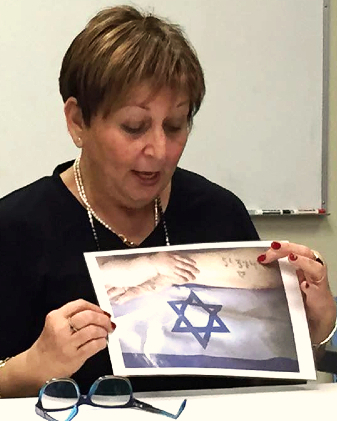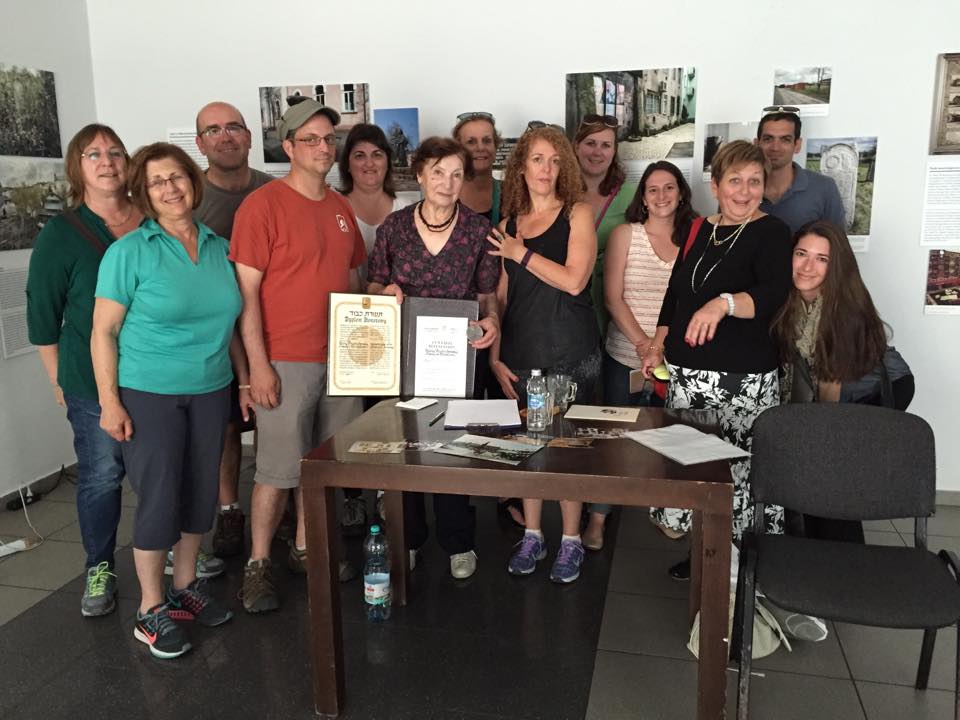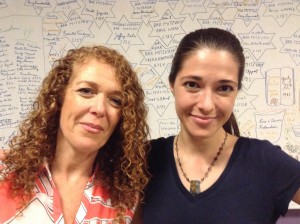Israeli Chronicles — Connecting Israel & Cincinnati

Holocaust Educators’ Summer Journey: “I Am Not the Same Person I Was”
On July 8 eight Holocaust educators, four from Cincinnati and four from Netanya, Israel, began an 18-day voyage to improve how they teach the Holocaust. They visited Cincinnati, Poland, and Israel through Partnership2Gether (P2G), a collaboration supported by the Center for Holocaust and Humanity Education (CHHE) and the Jewish Federation of Cincinnati on the US side, and the Department of Education of the Municipality of Netanya on the Israeli side. Asked how she sums up the trip, Kristin Rutter, a former Catholic-school teacher and current English teacher at Little Miami High School, said, “I feel very strongly that words are just not enough. I don’t have the words yet to tell my kids, yet I feel so fortunate that I was able to do this. I am not the same person I was three weeks ago.”
The education was intensive: the educators learned from each other and from numerous experts in Cincinnati, Poland, and Israel. I was privileged to spend time with the group when they started out, and everyone’s passion, expertise, and generous spirit shone in what they said, and how they listened. Kristin said, “It was a very powerful emotional experience to have with people who didn’t know each other. But by the end we became very close, very supportive, and I think very humbled by one another’s experiences.”

The goal was to learn from each other, because Americans and Israelis teach the Holocaust differently, said Alexis Storch, Director of Education for the Center for Holocaust & Humanity Education. “Here we often draw out the universal lessons, such as social responsibility, tolerance and coexistence, and respect for differences; in Israel, the focus is often on the larger context of Zionism and the creation of the state of Israel.” Israelis are also more focused on armed and other crucial resistance during the Holocaust, such as the approach of the Ghetto Fighters House Museum.
“I am here to give my students a context for literature that is humanized,” said Kristin. “It’s very easy for students to see violent things as entertainment because that’s all the media gives them. If something blows up it supposed to be entertainment. And when we read the Holocaust there’s a real danger of them not understanding the humanity involved. The Holocaust Center gives me resources, first-person especially, that allow my [Catholic private school] students to see this as a human issue. It allows them to have an intergenerational respect. It breaks the homogeneity of their environment, of their culture.”
Rachel Poplinger, an Israeli English teacher in junior high school in Netanya, Israel, is here in part because “I am a second generation to Holocaust survivors.” Rachel has worked with the Center for Holocaust & Humanity Education for two years now, with her seventh graders matched up with Cincinnati seventh graders. The first year they studied about the first Israeli astronaut Ilan Ramon in a P2G program called Reach for the Stars, and in the second they did a project based on a Holocaust memoir by Uri Orlev, The Island on Bird Street.
As each educator did, Rachel presented to the others how she taught the Holocaust. “In the beginning the kids were really a little bit scared, they didn’t know what was going on to be ahead, but I brought [the other educators] what they wrote as a final reflection of how they felt from the beginning,” she said. “It was a very interesting and fascinating experience for them and for me as well.”

One of the touchstones for the educators has been an ongoing Holocaust Educators Exchange blog where they posted photos and comments every day of the trip. For example Brian Meyers, who teaches 10- and 11-year-olds at Wise Temple, wrote on July 16, “Yes, I took my shoes off at Majdanek today. We had just walked past the room with the shoe collection. I wanted to walk in the whole camp with bare feet. It was my rebellion against the Nazis.”
The experience was powerful, says Kristin. “I just talked to two of the Israeli educators this morning, and everyone is overwhelmed by how much there is to take in.” Even after the trip is over, the collaboration will continue. In their final meeting the educators brainstormed on how to continue their work together. The Americans and the Israelis will meet separately and then come together virtually to decide on a project or projects. They hope to create something transformative that can be shared with the wider educational community of teachers and students.
For Partnership2Gether, this is the second in a series of collaborative projects in professional development. The first, which took place last year, was an exchange with social workers from Netanya and from Jewish Family Service in Cincinnati. Both are built on the same concepts: learning from each other, finding best practices, and focusing on people-to-people, Cincinnati-Netanya relationships.
